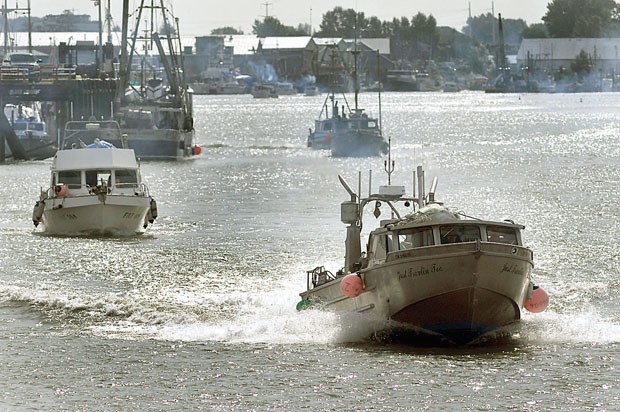On Oct. 24, the Department of Fisheries and Oceans opened a commercial gillnet fishery for Fraser River chum salmon, one of B.C.’s most unsustainable fisheries.
While chum are the only species that remain abundant enough to have a commercial fishery on the Fraser River, these fish migrate through the lower Fraser, where the gillnet harvest will be conducted at the same time as Thompson and Chilko rivers’ steelhead return. In the process of conducting this commercial fishery, steelhead will be captured as by-catch. These iconic runs of steelhead have been posting record lows over the past decade, and much of this has to do with the commercial chum-salmon fishery.
The Fraser River is the longest river within British Columbia, starting near Mount Robson and travelling more than 1,300 kilometres into the Strait of Georgia. It is one of the most famous salmon rivers in North America, documented through history as an essential component of life for many First Nations, and a route for B.C.’s earliest commerce and industry. It is also a Canadian Heritage River; today, its basins are home to two-thirds of B.C.’s increasing human population.
Once the economic engine of the town of Spences Bridge, the Thompson River steelhead has declined from more than 7,000 returning to the Fraser in the 1980s to a mere 430 reaching the spawning beds in 2016. Chilko River steelhead numbered as many as 5,000 returning in the 1980s, but only 134 fish returned in 2016.
Fishing has been catch and release since the ’90s, and fishing is now closed. This year’s in-season spawning population forecast is 165 for the Thompson and 50 for the Chilcotin — these fish are on the verge of extirpation.
It isn’t just steelhead. Sockeye have been posting record lows, chinook have been in long-term decline, and coho have been on life support since the ’90s. Even pink salmon, which are normally abundant, failed to return this year. There has been no commercial or recreational fishery for any of these species in the Fraser this year.
It seems chum are the only species that are still around in meaningful numbers. It could be because these fish are less desirable, often being sold as canned or smoked salmon. Through no fault of their own, steelhead return in the fall at the same time as chum salmon; when there are gillnets in the water for chum, steelhead are being caught.
Federal and provincial governments continue to approve and support these commercial net fisheries, with added clout through the Marine Stewardship Council certification. The certification allows Canada to sell its fish worldwide with a label that implies it’s sustainable. While the chum fishery might be sustainable for the targeted species, it sure isn’t for our almost extirpated Interior steelhead.
The provincial steelhead experts estimate as many as 50 per cent of the Thompson- and Chilcotin-bound steelhead are intercepted in nets, and of those, half die. This year, the province estimates 20 per cent of the steelhead swimming for their spawning grounds will be killed through fishing mortality (nets). Naturally, the federal Department of Fisheries and Oceans will downplay the effect nets have on steelhead, citing poor data and reduced interception in recent years.
The “poor data” argument is probably true; both the province and federal government have been offering that answer to all of the fisheries crises we are having. The fisheries science for these runs of fish has been abysmal. This should come as no surprise: Both governments have a long track record of cutting staff and budgets, making good decisions all but impossible.
It also makes sense that interception has gone down; with a few hundred steelhead returning when there used to be thousands, we would expect very few to end up in nets — that still doesn’t make it sustainable.
Thompson and Chilko steelhead are a canary in the coal mine, like our mountain caribou, another species being rapidly extirpated due to our lack of support for these biological treasures. While there have long been calls for studies, independent reviews and recommendations dating back to the 1980s, there is no funding, no plan and no action. We are managing these fish to zero.
It’s time to change our practices, develop a science-based recovery, and focus on adequately funding and managing our salmon and steelhead for future generations of British Columbians. It’s time to list the Thompson and Chilko Steelhead under the Species At Risk Act and stop the needless interception.
This fall, when you see chum salmon in stores, consider what you are buying. When we are down to a couple of hundred steelhead, can we really afford to lose any more?
Jesse Zeman is director of the B.C. Wildlife Federation’s Fish and Wildlife Restoration Program.



